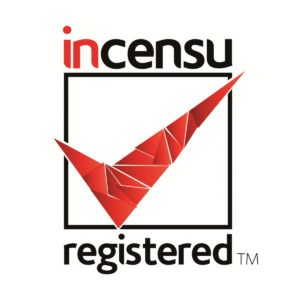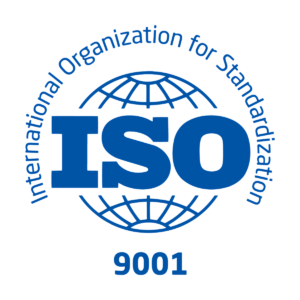5 Ways to Manage Employee Absence in Your Business

The Centre of Economic and Business Research (CEBR) brought out a new report in 2017 studying the impact of workplace absence on the UK economy. As much as GBP 18 billion is lost every year in potential and productivity. Every year since 2011, workplace absences, and the associated costs, have been rising here in the United Kingdom.
The CEBR predicts cost of absence rising to as much as GBP 21 billion in 2020, and GBP 26 billion in 2030. At the same time, however, the average level of employee absence (6.3 days per employee) has decreased in all sectors and is at its lowest level in the past seven years. The overall median cost of absence per employee (GBP 522) has fallen slightly compared with previous years, corresponding with the decrease in absence levels. Largely, this is because employers have begun to monitor and penalise employees with higher absence levels.
It’s important, therefore, to understand where your organisation stands in all this. How much time is lost due to employee absences? How much can organisation productivity be improved?

Here are 5 ways you can manage employee absence to improve your productivity and grow your organisation.
1. Manage and analyse work absences
Monitoring is the first step to be taken in reducing absence in the workplace. The knowledge that one’s days off are being recorded itself often reduces absence, as employees realise that their attendance is being tracked! Employees understand that attendance can be tracked for appraisal and penalisation or incentive, and do often modify their behaviour to suit this awareness.
Monitoring and management of absence, with due approval from managers, is essential. Text messages to managers, or emails dropped at the end of the previous working day, are simply not acceptable! This is true for both planned absence, as in the case of casual leave or travel, or unplanned absence, like sickness or emergency situations.
Use a formal attendance system to record, monitor, track and manage your employees’ absences. Online time and attendance management systems, such as the Synel Time and Attendance System, can generate reports using which you can understand who your regularly absent employees are, and where you can work to improve attendance.
Talk with employees after they return from long-term absences, or who frequently take short-term absences, to understand why it occurred and how to prevent such in the future.
2. Carefully choose your staff
Dedicated, trustworthy staff are less likely to take time off! Choose self-driven, motivated staff who are excited to come in every day. Those who live near your workplace are less likely to take time off to visit their families, and those without children are less likely to need time off for family vacations or school meetings.
You can’t always choose employees based on how high their attendance is likely to be! However, it is possible, and necessary, to prioritise highly conscientious individuals over others. In many roles, it is enthusiasm and drive, and commitment, that distinguishes the employee.
3. Create flexible working schedules
Even if they absolutely love their jobs, many of your staff are likely to have legitimate reasons to miss work – a loved one to care for, long-term or acute sickness, a medical or school appointment. These dedicated, driven employees don’t want to miss work, but have no choice as certain requirements are time-bound and specific.
Give your people the option to come to work! Experiment with flexible working hours and schedules where possible.
There are a good number of HR practices that can reduce absence. One of those is to build relationships within the organisation by strengthening team spirit. Interact with your employees and provide a welcoming space for growth and togetherness. The more your employees love their work, the less absence likely – teams work best when they work together!
4. Reinforce safety as a culture
Injuries at the workplace impact productivity in a number of ways. Not only do they adversely impact morale, they also result in lost time and productivity at work. Injuries anywhere need treatment; when an employee is injured at the workplace, there are certain legal requirements which must be met by any organisation. Educate yourself on the requirements of the law when it comes to safety and injury prevention.
Regardless, of course, any injury is undesirable and does result in time off for the injured party. It is inevitably a loss in productive time. So ensure that safety is ingrained into your culture, thinking through each process and task in terms of safety of your people.
5. Use a professional time and attendance management system
Many of the points mentioned above, such as creating a flexible working schedule for all your employees, are complicated. Take the assistance of a professional solution such as the Synel Time and Attendance System, to maintain a clear understanding of who is expected on a particular date, and when. Track and monitor who are your repeat offenders, and who are your most dedicated employees, with minimal absence.
Synel provides an innovative web-based solution, ideal for the easy management of employees’ activities – including time and attendance, scheduling, biometric and card access control, and absence request. The Synel Time and Attendance System is efficient and user-friendly, and gives you, the manager, access to real-time information from anywhere in the world.
With the Synel System, you have access to:
- Customised Solutions
- Absence Request/Authorisation
- Exceptions and Rules
- Easy Time-sheets and Reports
- Live Status Tabs
- Daily Activities
- Schedule Screen
- Virtual Terminal
- Mobile Workforce Management via app
- Interactive Screens
- Attentive and Helpful Customer Service
- Access control module
- Notifier module
- Documents e-filing module
You can also authorise your employees to access different levels of the system, depending on the team they are managing and the requirement. Absence may make the heart grow fonder… but certainly not the balance sheet! Keep your employees happy while reducing absence at the workplace. With these simple steps, you can increase efficiency at work!
If you enjoyed this blog post you can also read, 4 ways to save money through Effective Scheduling. Click here










